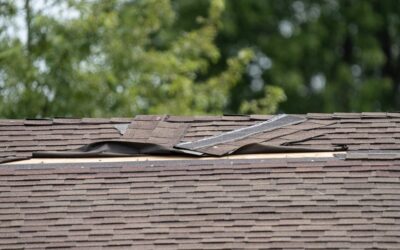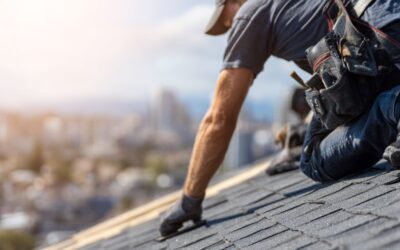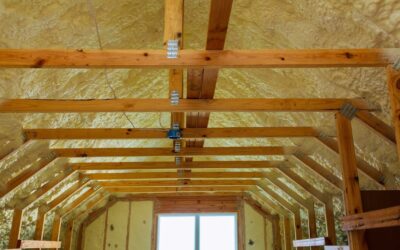The Ultimate Guide to Flat Roof Maintenance for Commercial Buildings
Commercial buildings are a significant investment, and one of the most critical components to protect that investment is the roof. Many commercial properties feature flat roofs due to their cost-effectiveness and versatility. However, flat roofs require specific care and attention to ensure longevity and prevent costly damage. This is where flat roof maintenance commercial practices become essential.
In this guide, we’ll cover everything you need to know about maintaining a flat roof for commercial properties. From routine inspections and cleaning to addressing common problems and selecting the right contractor, this article is your go-to resource for keeping your commercial flat roof in top condition.
What Is Flat Roof Maintenance for Commercial Properties?
Flat roof maintenance commercial refers to the regular inspection, cleaning, repair, and preventive care of flat roofing systems on commercial buildings. Unlike sloped roofs, flat roofs are more prone to water pooling, membrane damage, and leaks. Maintenance ensures that minor issues are caught early before they escalate into major, costly repairs.
The primary goals of flat roof maintenance include:
- Preventing leaks and water damage
- Extending the lifespan of the roofing system
- Maintaining energy efficiency
- Protecting the structural integrity of the building
- Ensuring compliance with warranties and insurance policies
Regular maintenance not only preserves your roof but also protects your investment in the commercial property.
Why Flat Roof Maintenance Is Crucial for Commercial Buildings
Flat roofs are practical and cost-effective, but they come with unique challenges. Without proper maintenance, issues can arise quickly. Here’s why flat roof maintenance commercial is essential:
1. Prevents Water Damage
Flat roofs are more susceptible to water pooling, which can lead to leaks, mold growth, and structural damage. Routine inspections and cleaning prevent water from accumulating and causing serious issues.
2. Extends Roof Lifespan
A well-maintained flat roof can last 15–30 years, depending on materials and climate. Neglecting maintenance can cut this lifespan significantly, forcing premature replacement.
3. Cost-Effective in the Long Run
Regular maintenance is far less expensive than emergency repairs or full roof replacement. Preventing damage early saves money and minimizes business disruption.
4. Protects Building Integrity
Leaks or membrane failures can compromise insulation, ceilings, and interior spaces. Maintenance ensures the entire commercial structure remains protected.
5. Compliance with Warranties and Insurance
Most roofing warranties require periodic inspections and documented maintenance. Insurance claims for roof damage may also depend on proof of regular upkeep.
Common Flat Roof Types in Commercial Buildings
Understanding your roof type is critical for effective maintenance. The most common flat roofing materials include:
1. Built-Up Roofing (BUR)
Also known as tar and gravel roofing, BUR consists of multiple layers of bitumen and reinforcing fabrics. Proper maintenance involves inspecting for blistering, cracks, or gravel displacement.
2. Modified Bitumen Roofing
Modified bitumen roofs are similar to BUR but include polymers for added flexibility. Maintenance focuses on seam integrity, membrane damage, and punctures.
3. EPDM Rubber Roofing
EPDM (ethylene propylene diene monomer) is a durable synthetic rubber roofing membrane. Maintenance includes checking for tears, seams separation, and ponding water.
4. TPO Roofing
TPO (thermoplastic olefin) is a reflective, single-ply membrane that reduces energy costs. Maintenance involves seam inspections, puncture repairs, and UV damage prevention.
5. PVC Roofing
PVC (polyvinyl chloride) membranes are heat-welded and highly durable. Maintenance includes checking welds, punctures, and chemical exposure damage.
Each roofing type has unique maintenance requirements, and understanding these nuances is essential for long-term protection.
Key Flat Roof Maintenance Tasks for Commercial Buildings
Maintaining a flat roof involves a combination of inspections, cleaning, repairs, and preventive measures. Here are the most important tasks:
1. Regular Inspections
Routine inspections are the cornerstone of effective flat roof maintenance. Key points include:
- Check for ponding water or drainage issues
- Inspect membrane seams for separation or cracks
- Look for blisters, cracks, or punctures
- Examine roof edges, flashing, and penetrations
- Assess for signs of mold, mildew, or algae growth
Inspections should be conducted at least twice a year, ideally in spring and fall, and after severe storms.
2. Cleaning the Roof Surface
Debris, dirt, leaves, and branches can trap moisture and damage roofing materials. Regular cleaning helps prevent:
- Clogged drains and scuppers
- Ponding water
- Membrane punctures from sharp debris
- Mold and algae growth
Use a soft-bristled broom or blower to remove debris, and avoid harsh chemicals that can damage the roofing material.
3. Maintaining Roof Drains and Gutters
Proper drainage is essential for flat roofs. Maintenance should include:
- Cleaning drains, gutters, and scuppers regularly
- Ensuring downspouts are clear and functional
- Checking for standing water after heavy rainfall
Proper drainage prevents ponding, which is a leading cause of flat roof failure.
4. Repairing Minor Damage
Addressing minor issues early prevents major problems. Common repairs include:
- Sealing small cracks or splits in the membrane
- Reinforcing seams with appropriate adhesives or patches
- Replacing damaged flashing around roof edges, vents, or skylights
- Applying protective coatings to extend roof life
5. Preventive Coatings
Applying a protective roof coating can extend the life of your flat roof. Coatings protect against UV rays, water infiltration, and minor physical damage. Popular options include acrylic, silicone, and polyurethane coatings.
Seasonal Flat Roof Maintenance Tips
Each season presents unique challenges for commercial flat roofs. Tailored maintenance ensures year-round protection.
Spring
- Inspect for winter damage, such as ice or snow accumulation effects
- Clean debris and repair any cracks or punctures
- Check drainage systems for blockages
Summer
- Inspect for UV damage and membrane degradation
- Ensure reflective coatings are intact to reduce heat absorption
- Trim nearby trees to prevent debris accumulation
Fall
- Clear leaves and organic debris
- Inspect and seal seams before winter
- Check gutters and drains to handle heavy rainfall
Winter
- Monitor snow and ice accumulation
- Remove heavy snow carefully to prevent roof stress
- Inspect for leaks due to ice dams or freeze-thaw cycles
Common Flat Roof Problems and How Maintenance Prevents Them
Regular flat roof maintenance helps avoid these frequent issues:
1. Ponding Water
Standing water accelerates membrane deterioration. Preventative measures include proper drainage installation and routine inspection.
2. Membrane Cracks and Splits
Cracks develop from weather exposure and material fatigue. Early repair and preventive coatings reduce risk.
3. Blistering
Blisters occur when trapped air or moisture forms bubbles under the membrane. Regular inspections help detect and repair blisters before they burst.
4. Leaks Around Penetrations
Vents, HVAC units, and skylights are vulnerable points. Maintenance involves sealing these areas and reinforcing flashing.
5. Punctures from Foot Traffic
Commercial roofs often have workers or equipment on them. Designating walkways and using protective pads can prevent punctures.
Benefits of a Regular Flat Roof Maintenance Program
Implementing a structured maintenance program offers multiple advantages for commercial properties:
1. Longer Roof Lifespan
Routine care prevents premature deterioration, ensuring your roof lasts its expected service life.
2. Reduced Emergency Repairs
By identifying issues early, maintenance reduces the likelihood of costly emergency repairs.
3. Improved Energy Efficiency
A well-maintained roof prevents leaks and insulation damage, maintaining energy-efficient building performance.
4. Better Safety
Regular maintenance identifies hazards like slippery debris, weak spots, or structural concerns.
5. Enhanced Property Value
A properly maintained flat roof improves building aesthetics and resale value, making it an attractive asset for potential buyers or tenants.
Hiring the Right Commercial Roof Maintenance Contractor
Selecting a reliable contractor ensures effective flat roof maintenance:
- Experience: Choose contractors with experience in commercial flat roofs.
- Licensing and Insurance: Protects your property and ensures professional standards.
- References and Reviews: Verify past client satisfaction and completed projects.
- Warranty and Service Agreements: Some contractors offer maintenance programs that include periodic inspections, cleaning, and minor repairs.
- Local Knowledge: Contractors familiar with your region’s weather conditions can provide tailored solutions.
Cost of Flat Roof Maintenance for Commercial Buildings
The cost of flat roof maintenance varies based on roof size, material, and frequency of service. Typical factors include:
- Inspection fees: $200–$500 per visit
- Cleaning and debris removal: $0.50–$1.50 per square foot
- Minor repairs and sealing: $300–$1,000 depending on damage
- Maintenance programs: $500–$2,500 annually for regular inspection and upkeep
Investing in routine maintenance is far less expensive than emergency roof replacements or extensive water damage repairs.
Flat Roof Maintenance Checklist for Commercial Buildings
Here’s a quick reference checklist for effective flat roof maintenance commercial:
 (440) 307-2060
(440) 307-2060




